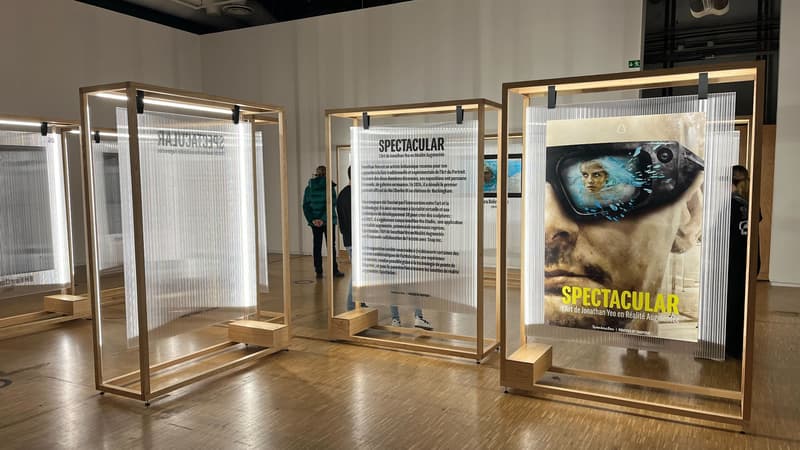A festival of shouts of enthusiasm welcomes visitors to the fourth floor of the Pompidou Center on October 24 and 25. On the occasion of the Because Beaubourg event, a kind of museum opening celebration, Snapchat was installed in one of the museum’s rooms. The company presents, in collaboration with the British artist Jonathan Yeo, the exhibition “Spectacular: The Art of Jonathan Yeo in Augmented Reality”.
Behind this long name, there is actually a 100% immersive experience. Here, visitors can watch the paintings come to life, interact with the works, and even… be transported directly into the portrait. All thanks to the Snapchat Spectacles glasses.
“The augmented reality that we are developing is mainly done through the smartphone camera. But the future of AR goes through glasses,” recalls Antoine Gilbert, director of AR South at Snapchat Paris. “This is the first demonstration of the glasses to the general public,” he adds, while the device should be marketed in 2026.
“The future of exhibitions”
With augmented reality (AR) glasses on their noses, visitors can discover seven paintings by artist Jonathan Yeo, in a slightly special way. To the rhythm of the portraitist’s explanations, who duplicated the experience in French, the paintings come to life. The colors change, the elements leave the frame and a painting has fun following your gaze. A butterfly even escapes from one of the paintings and lands on your finger. In another work, you can trap paint particles and move them.
“What visitors always wonder when they look at portraits is what they would be like,” observes artist Jonathan Yeo for Tech&Co, who has collaborated with the company in the past. “I always had the idea of integrating them and surprising them.” The company’s augmented reality technology allowed it to make this dream a reality.
With one advantage: this time visitors no longer have their eyes on their phones. “With augmented reality we are still in the real world. Other visitors share the same experience,” says the artist. “This is not what happens when we are in front of a screen or in a virtual reality where we are alone. There it becomes an experience to share.”
A community experience, therefore, but also personalized. Because other paintings push the dip cursor even further. In certain parts of the exhibition, the visitor is transported directly to the place of King Charles III. Some portraits can also be transformed to reveal a child or older version of the visitor. The highlight of the show is that his own portrait appears in the style of Jonathan Yeo.
“Perhaps it is a sample of what museum experiences will be like in the future,” the artist slips. “We are used to seeing people with their audio guide. This is another way to greatly improve this system, without disturbing other visitors.”
Accessible technology
And above all, reach a more varied audience. “The audience is quite young,” says Jonathan Yeo. “A lot of people who wouldn’t necessarily have gone to an exhibition responded.” However, this is not about leaving aside the older public, who sometimes feels less comfortable with new technologies.
It is not the first time that the social network, with 26 million monthly users in France, collaborates with an artist or a cultural institution. Starting this summer, the platform offers, in collaboration with the Palace of Versailles, an augmented reality experience to rediscover the gardens and become a baroque dancer from the time of the Sun King. Visitors will thus be able to put themselves in the shoes of a dancer thanks to a filter developed by the social network.
In 2023, Snapchat also partnered with the Louvre Museum to (re)discover Egyptian collections. In this way, visitors were able to see what several works were or should have been. A year earlier, the Pompidou Center took the stage again. The museum designed by Renzo Piano and Snapchat joined forces to transform the facade of the Parisian museum into a musical instrument. In total, the social network has established no less than 40 collaborations in three years.
Source: BFM TV


